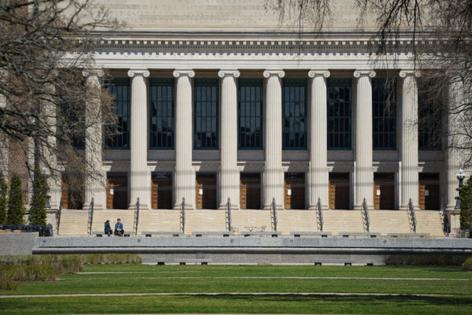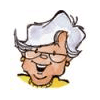New $55 million University of Minnesota institute will pursue secrets to youthful aging
Published in News & Features
The University of Minnesota is investing millions in a quest to understand aging and why some people feel and look much younger or older than their birth dates suggest.
When it opens next summer, the University’s Institute for Healthy Aging will pursue, test and then provide strategies that help people achieve biological ages that are lower than their chronological ages, said Dr. Tim Schacker, executive vice dean for the University of Minnesota Medical School.
Biological age refers to the relative change over time in bodily and cellular function rather than how long a person has been alive.
“You could be a healthy, active 70-year-old and your biological age might be 55 or 60, something like that,” Schacker said. “You could be 70 but your biological age is 85. That’s the equation we want to change.”
Philanthropic support of nearly $55 million is kick-starting the institute, which will feature a clinic in St. Louis Park. The institute also will be a hub of geriatric care for Minnesota’s rapidly aging population and a training ground for the next generation of geriatricians.
But Schacker said it will be unique nationally in its pursuit of healthy aging.
The institute will literally be in a race against time. Minnesota for the first time has more senior citizens than school-age children, and its population of 1 million elderly residents is projected to reach 1.2 million by the end of this decade.
“We want to step in at an earlier age with interventions that will allow people to age in a healthy way,” Schacker said. “It isn’t that we’re trying to (delay) death so people can live longer. That would be wonderful, I suppose, but that’s not the goal. The goal is to live healthier so you don’t get all of the comorbidities that are associated with aging.”
The U niversity of Minnesota already is in the process of leasing space next to one of its neurology clinics and hiring a director for the institute’s Division of Geroscience, which will train medical students in geriatrics and existing medical professionals about the unique challenges of elder care.
The roughly 7,000 geriatricians in the U.S. right now are well short of the goal of 25,000, so doctors in other specialties are going to need more training and skills to manage the elderly patient population, said Dr. James Pacala, head of the U’s family medicine department.
Minnesota Masonic Charities is one of the contributors, creating the Masonic Institute on the Biology of Aging and Metabolism that will serve as the research arm of the new aging center. The Bloomington-based nonprofit also is a named sponsor of the U’s cancer center and pediatric hospital.
“If we can help people stay biologically younger than their years, we can extend not just life, but the quality of it. That’s been our mission for more than a century,” said John Schwietz, the nonprofit’s chief executive.
The U of M’s startup comes amid uncertainty, given President Donald Trump’s diminished support for scientific research and his administration’s quarrels with the university over some policies. Pacala only received three-fourths of a $1 million federal grant this year to boost the geriatrics workforce, with no explanation of why or whether the cut is permanent.
But leaders said the institute is leveraging the university's national reputation for expertise in elder care research and immense public interest.
Pacala envisions biological age like a line that gradually slants downward, leading to age-related conditions such as dementia and more need for help with daily activities. What people want is a longer, straighter line that doesn’t drop until the end of life.
“That is the holy grail if anti-aging treatments help to square that off,” he said.
Genetics are responsible for 10% to 25% of the variation among people in their rates of aging and longevity, according to researcher estimates, leaving room for everything from environment to diet to exercise to medicine to play a role.
University researchers have studied whether existing therapeutics such as metformin, typically used to treat diabetes, have anti-aging properties. They also have tested in mice a new class of drugs called senolytics and whether they affect aging by removing senescent cells that linger in the body but no longer divide and produce new cells.
“If you were an aging mouse, we could keep you healthier for longer,” based on this research, said Paul Robbins, associate director of the Masonic aging institute.
The clinic at the new institute will help researchers move beyond animal research and enroll patients in clinical trials to see if medications and supplements go beyond management of individual diseases.
“Can we actually target aging itself?” Robbins asked.
An AARP survey in 2022 found around 80% of adults would be willing to take a pill that could extend their lives by 10 years. But longevity alone wasn’t the goal for some of the seniors who filled a workout room at Life Time in Lakeville on Tuesday.
Judy Squires is a regular in the fitness club’s Arora program, which creates a community for older adults to maintain strength, balance and cognition. On Tuesday, the class had her balancing on one leg while twisting side to side with a medicine ball and grooving to Kool and the Gang’s “Celebration.”
The 77-year-old from Farmington used to be in peak shape as a corrections officer but had a heart attack two years ago and lost muscle and balance.
Now, she said, she wants a long life but also good health.
“My grandkids are a little older now, and I want to keep up with them,” Squires said.
Next to her were Reid and Jan Ingham, both 70. Jan’s work with older adults was personally motivating for the Lakeville couple, and showed chronological age could be deceptive.
“I see so many women not able to get up off the couch or out of the car and their quality of life really goes down when their body gives out,” she said. “We don’t want to be in that shape, so we have to work on it.”
Anti-aging supplements and claims have exploded in the U.S. to cater to this growing market, but some are based on flimsy research, said Dr. Francisco Lopez-Jimenez, a preventive cardiologist at Mayo Clinic in Rochester involved in aging research.
“It is prime ground for snake oil and essentially selling the secrets for eternal youth with very little scientific foundation,” he said.
A key next step in geriatrics research is identifying the biomarkers of biological aging, which can then be used to evaluate whether medications, diets, exercises and other habits are helping.
Senescent cells could be one marker along with key proteins in blood. Another is the length of telomeres, the caps at the end of DNA strands that protect them and preserve their ability to instruct cells to divide and grow.
University researchers say they hope the institute will discover a combination of biomarkers that can assess biological aging in patients across races and ethnicities. Existing “epigenetic clocks” predict age based on some of these markers, Robbins said, but aren’t reliable yet.
“If you tested yourself on 10 of those clocks,” he said, “you’d get 10 different results.”
©2025 The Minnesota Star Tribune. Visit startribune.com. Distributed by Tribune Content Agency, LLC







Comments